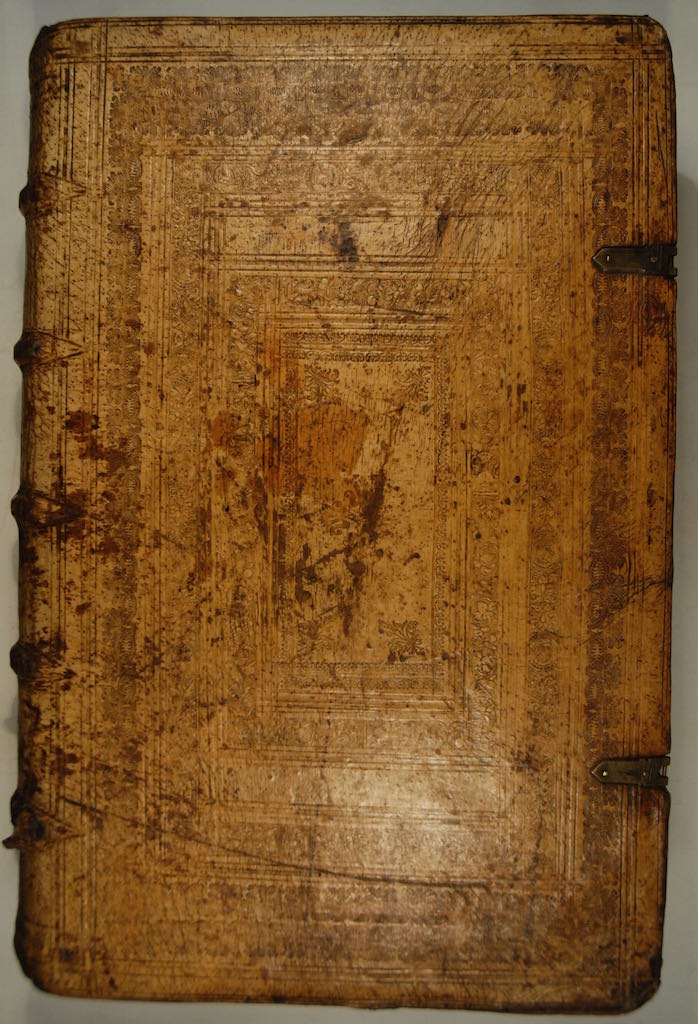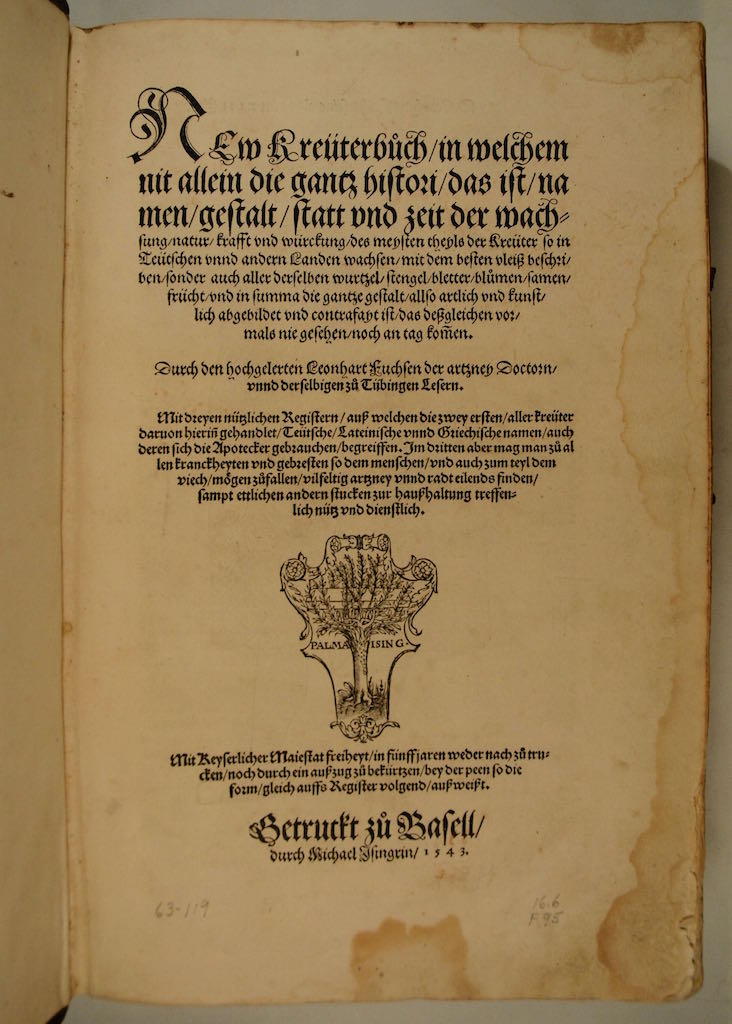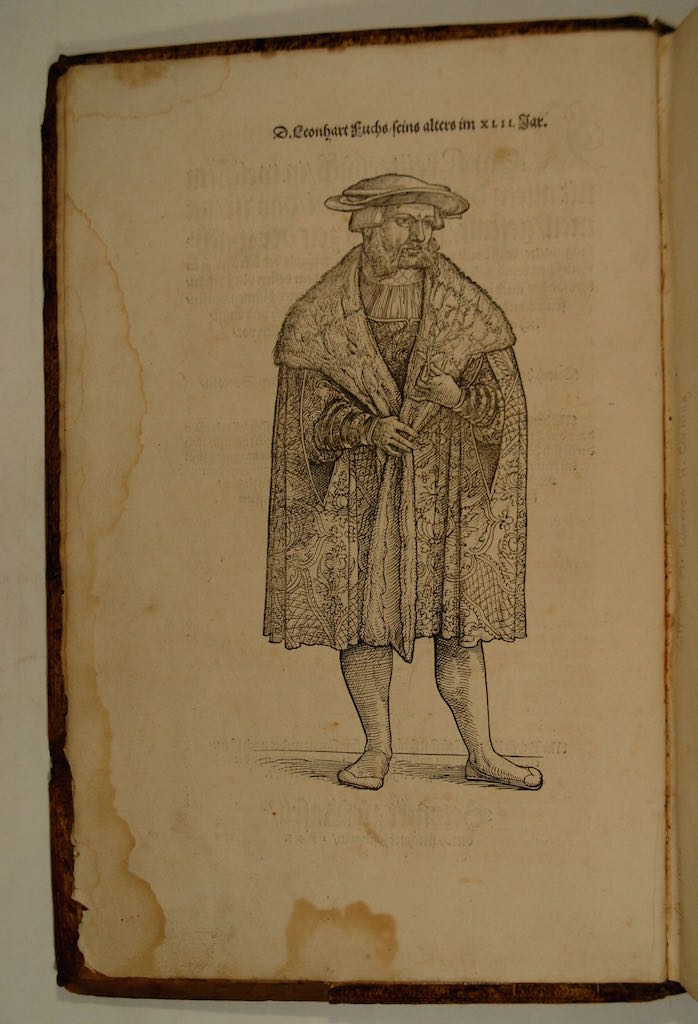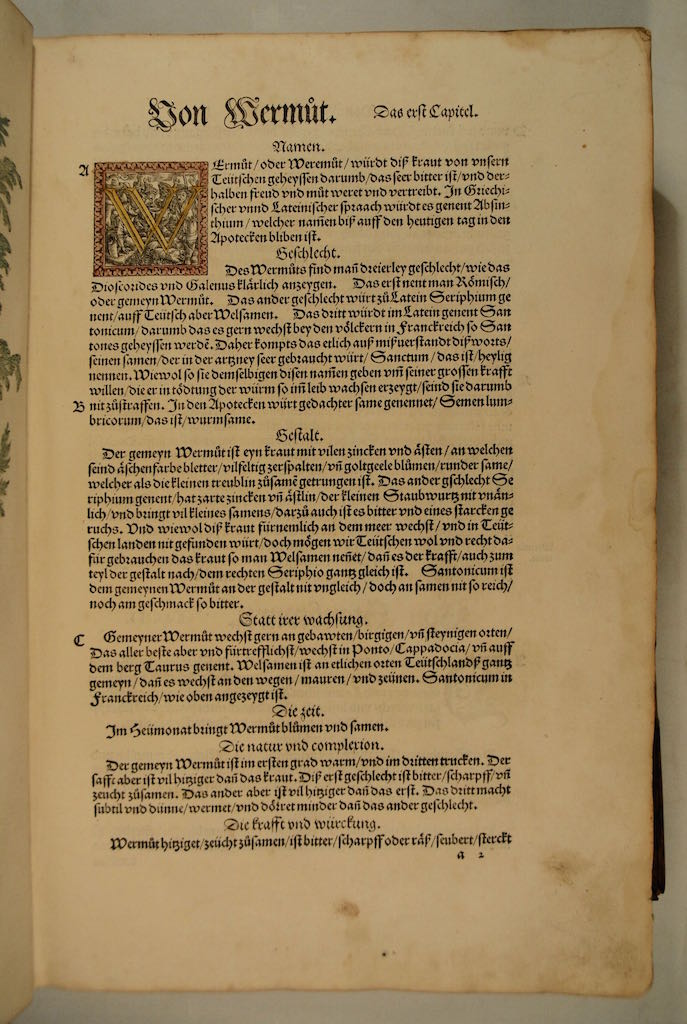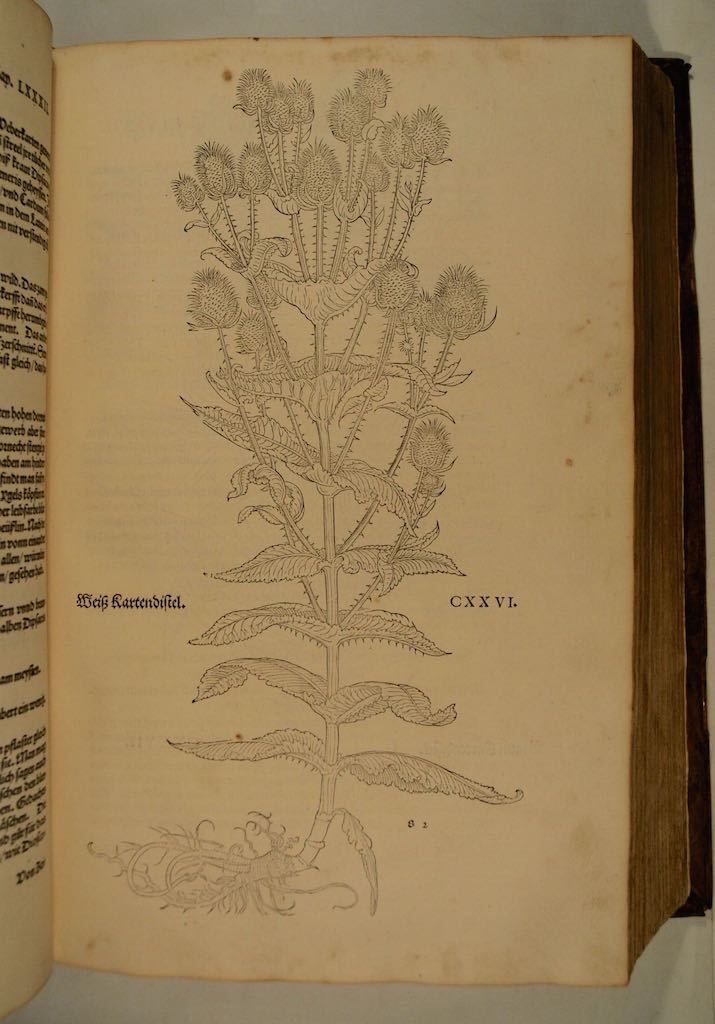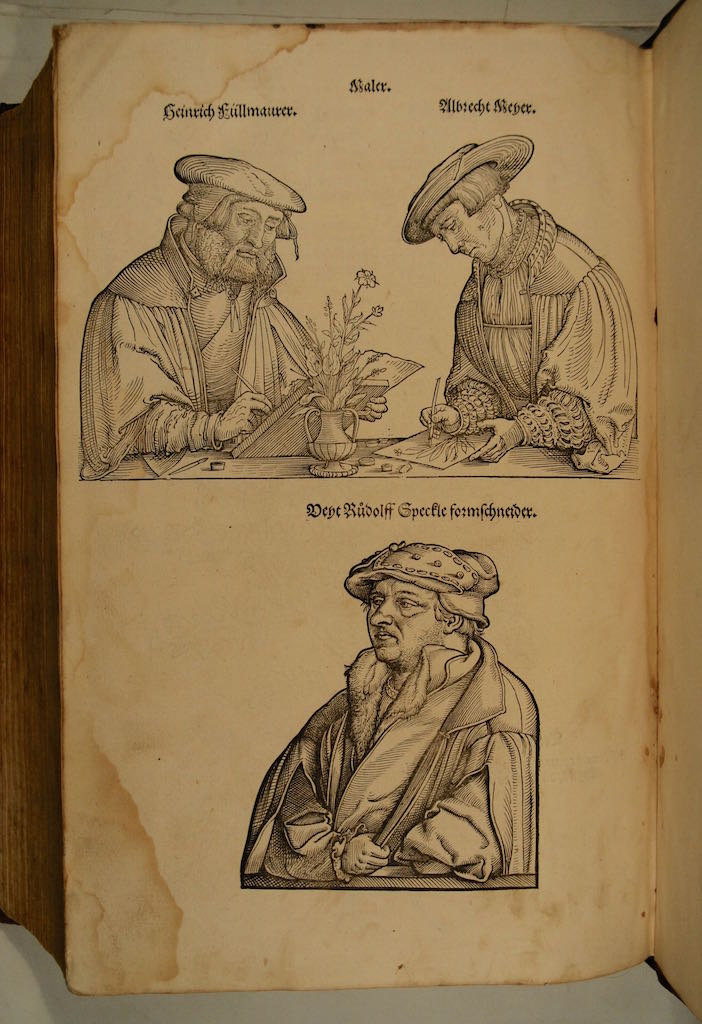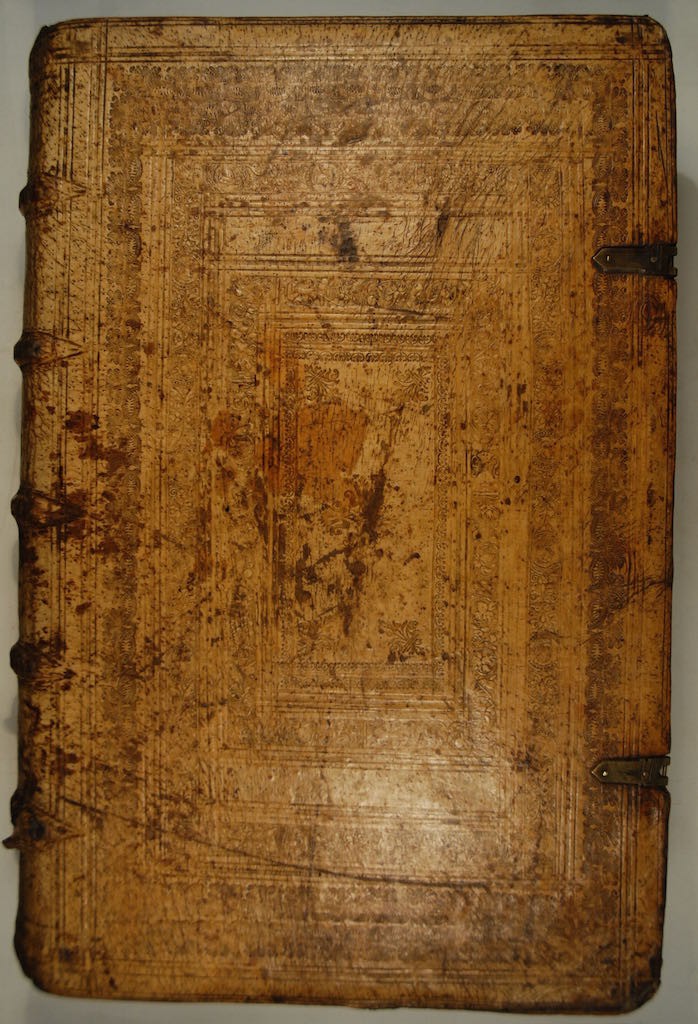FUCHS, Leonhard
New Kreüterbuch
Basel, Michael Isingrin, 1543£49,500.00
Folio, 444 leaves, +-++6, +++4, a-z6, A-Z6, Aa-Zz6, AA6, BB8. Gothic letter; woodcut printer’s device on title and larger on final recto, full-page full lenght portrait of Fuchs on title verso, 517 botanical woodcuts (15 with old hand-colouring) by Viet Rudolph Speckle after Heinrich Füllmaurer and Albert Meyer, portraits of the three artists at end; historiated initials; light water stains and finger marking to some margins at beginning and end, small marginal flaw to ff. Ff4-Gg4, barely touching one illustration. A very good copy, partially hand-coloured in the printing shop, in contemporary pigskin over thick-wooden boards, blind-tooled, triple fillet; rolls of interlacing floral decorations, medallions, antiques, grape and vine leaves, central panel with flower bunches to corner and centre; original clasps; slightly rubbed, few small stains to spine and joints; on front pastedown, inscription by Joseph von Gullingstein, dated 27 April 1793, nineteenth-century label of the Bibljoteka Julinska, bookplates of the Squire Library and the Warren H. Corning Collection; on pastedown, seventeenth-century ex libris of ‘Nobilis Francisci Fidelis’, prospective graduate in medicine at Leiden University. In folding cloth box.
First German edition of the most celebrated and beautiful herbal ever published, issued only a year after the princeps. Here, many mistakes were corrected and five additional woodcuts were inserted, namely those depicting ‘Hunerbis’, ‘Spitziger Wegerich’, ‘klein Schlangen kraut’, ‘Knabenkrautweible’ and ‘Kuchens chell’. Leonhart Fuchs (1501-1566) was an eminent physician and botanist of the early German Reformation. After completing his medical studies in Ingolstadt and teaching in that university, he moved to Tübingen. There, he served Duke Ulrich of Württemberg and contributed massively to the reform of the local university, which became the first German institution of its kind to adopt a humanist and Lutheran programme. A plant and the colour fuchsia are named after him.
Fuchs wrote many medical commentaries and treatises, though this herbal was by far his major achievement. As he explains in the preface of the work, he wished his own German translation to reach a broader audience than Latinate scholars and physicians, who had found in herbals a fundamental medical tool since Antiquity and the Middle Ages and hailed with enthusiasm the Latin first edition of the work. This time, Fuch’s target was common people interested in the natural world and the popular remedies derived from them. The readers were provided with an index of illnesses treatable with herbs, so as to facilitate consultation. Fuchs’s botanical descriptions are very accurate and mark a significant advancement in medical botany in respect of earlier somewhat crude herbals. This work dwells on over 400 German and 100 foreign plants – each with its own detailed illustration – and includes the first description of several recently-discovered American plants, such as pumpkin, chili pepper, snap bean and maize (mistakenly considered as a Turkish product). It was highly influential, with many reprints and translations into the main European vernaculars; its woodcuts were reused in all later editions, pirated several times and copied in the works of Hieronymus Bock, Rembert Dodoens, William Turner, amongst others.
The drawings were made from life by Albert Meyer, largely relying on the plants carefully gathered by Fuchs in his garden in Tübingen. Heinrich Füllmaurer transferred the illustrations onto woodblocks, which were later cut by Viet Rudolph Speckle. The three artists received the then unique honour that their portraits were included in the book.
Not in Durling or Heirs of Hyppocrates. BM STC Ger., 326; Adams, F 1107; Wellcome, 2443; Nissen, 659; Pritzel 3139; Alden, 543/11; Printing and the Mind of Man, 69 (Latin edition).In stock


